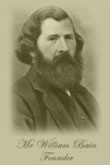We have been leaders in our field since 1859. Follow our timeline to discover more about the history of Lochrin Bain from the present day back to our humble beginnings.
With a longstanding history of supplying fencing to Network Rail, 2023 see’s the company secure over 80km of palisade fencing for sites across the UK’s rail network, cementing our position as the countries’ top suppliers of security fencing to the railways.
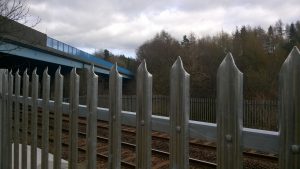
Despite the vast majority of the fencing industry closing due to the COVID-19 Pandemic, Lochrin Bain remained fully operational to ensure the UK’s CNI Infrastructure remained open for business.
The Lochrin Bain team celebrates the 160th Anniversary of our founder William Bain starting the business in 1859.
The business now into its 8th year of ownership under the Martin Group of Companies announces the change in name from William Bain Fencing Ltd to Lochrin Bain Ltd. Over the years the Lochrin Bain brand has become synonymous with the business, so much so it is the name many people referred to the business as. The name change is seen as a positive move that will effectively tie in with the long existing heritage of the company.

The new Patent Pending Lochrin Defender™ Palisade design is developed and independently tested by BRE, achieving LPS 1175 SR3 rating.

The company begins an extensive
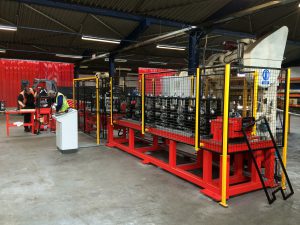
Gary MacGregor & Stephen Russell take over day to day responsibilities as Ian Kerr retires after 27 years at the helm.
Company develops range of products for the mesh market, including Flat, Crimped and weaved panel products.
The Martin Group of Companies purchases William Bain Fencing Limited from Ian Kerr.

William Bain Fencing Limited becomes Home Office accredited for the first time.
Company develops and Patents Combi Palisade.

Company relocates to its current location in Cumbernauld.
Ian Kerr buys Cecil Golightly’s shares to become owner.
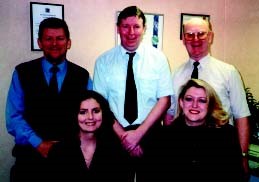
Company develops and Patents Rivetless Classic Palisade.

Cecil Golightly purchased the company from the receivers. Ian Kerr who was General Manager prior to receivership becomes Managing Director with a 25% shareholding.
William Bain and Co enters receivership.
Andrew Dick bought the company from Jim Greenhaugh.
Little is known about the company during this period although the company did change ownership several times within the Bain family. Towards the middle / end of this period the construction and concrete divisions were closed down as the company became focused on the manufacturing of their patented steel fencing products concentrating predominantly on palisade fencing. The company also had a very successful contract manufacturing sugar cane carriers and exporting these to the Caribbean.
The “Strong” man of Bain’s, William Fraser died in September. His service to the company had extended over a period of 60 years, and he had seen the progress of the business from small beginnings to a big and successful undertaking. Since Mr Bain’s death in 1936, Mr Fraser had been chairman of the company.
Less than 6 months after the Second World War started Lochrin Iron Works were almost completely engaged on Government contracts. The works were camouflaged and completely blacked out. The various departments worked in artificial light all day, which added considerably to the cost of running the Lochrin businesses. The Constructional Department bore the brunt of the war effort, since practically every type of work done there – hangars, buildings, bridges, section of tank landing craft – was essential to the successful prosecution of the conflict.
William P.C Bain died at his home in Edinburgh on Tuesday 7th July 1936 in his 84th year. It is recorded in the Directors Minutes book, in typically spare Scottish style – “He had been the principal personality in the business during his whole life”. His only son, Graham Bain, was killed during active service in the Great War.
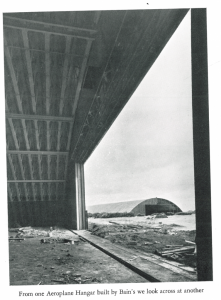
The National Grid scheme for the distribution of electricity throughout the United Kingdom was being planned, and the first to be constructed was the Central Scotland scheme. All the transmission line towers for this line were manufactured by William Bain & Co at Lochrin Iron Works in Coatbridge to the design of Milliken Brothers Limited. As far as it is known, this contract was the first of its kind to be carried out in this country.

The firm was formed into a Private Limited Liability Company with William P.C Bain as Chairman, William Fraser as Managing Director, and John Wilson as Assistant Managing Director.
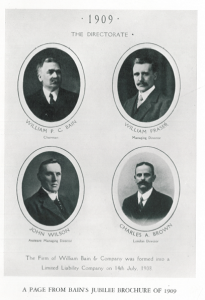
William Fraser joined the company initially as Cashier / Bookkeeper but soon proved himself to be a strong man of the firm. Around the same time John Wilson left his job as draughtsman in the drawing office and began working directly for William P.C Bain designing new types of fencing and then the buildings which the Construction Department were making.
Lochrin Iron Works were lifted from Edinburgh and replanted in Coatbridge, Lanarkshire, this location was chosen as it was right in the

William Bain & Co first exported the “Lochrin Dropper” to Australia & New Zealand.
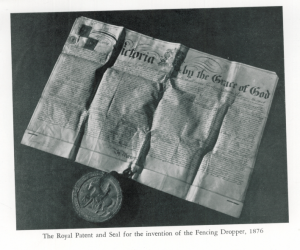
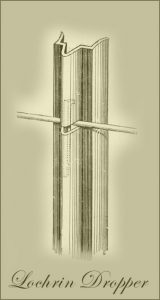
William Bain passes away leaving his widow, two sons

Company founded in Edinburgh by William Bain in the old Lochrin Distillery in Edinburgh renaming it Lochrin Iron Works and began by producing iron fencing and gates for estates in Scotland.
